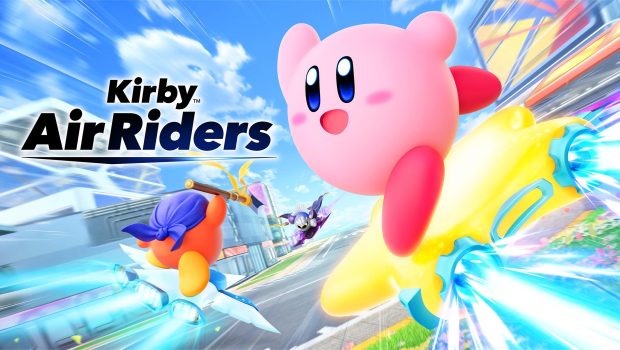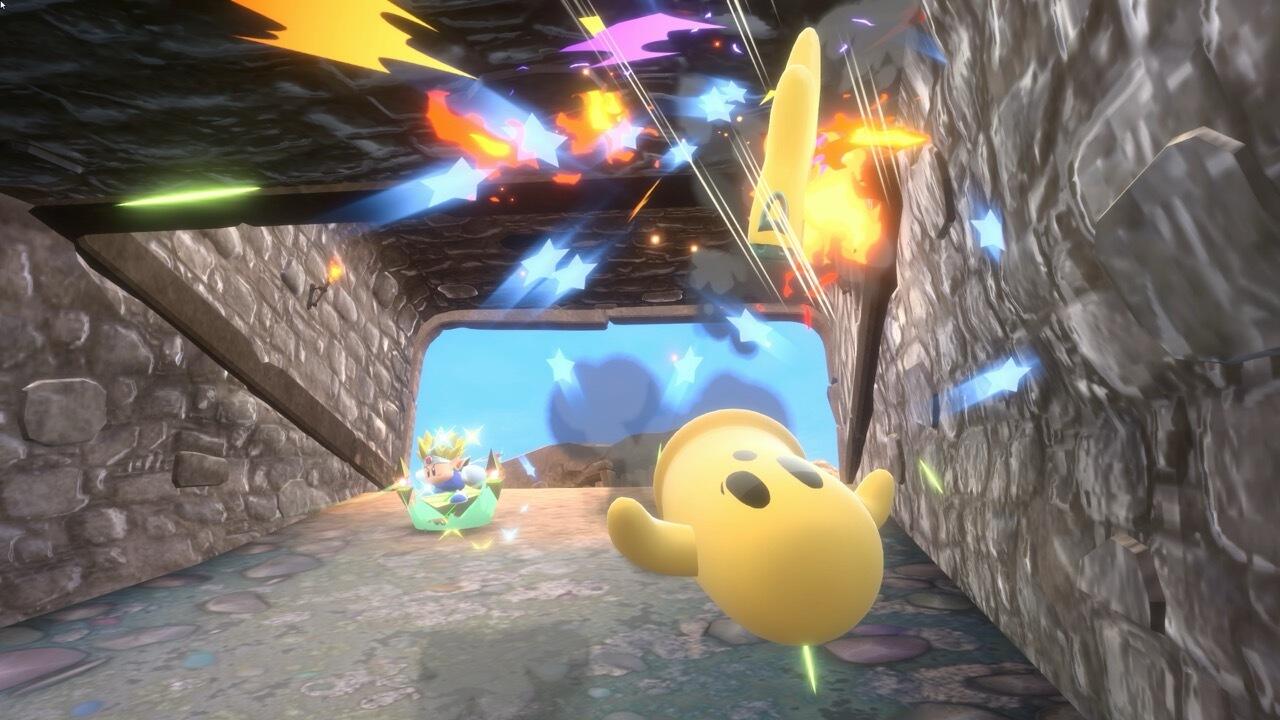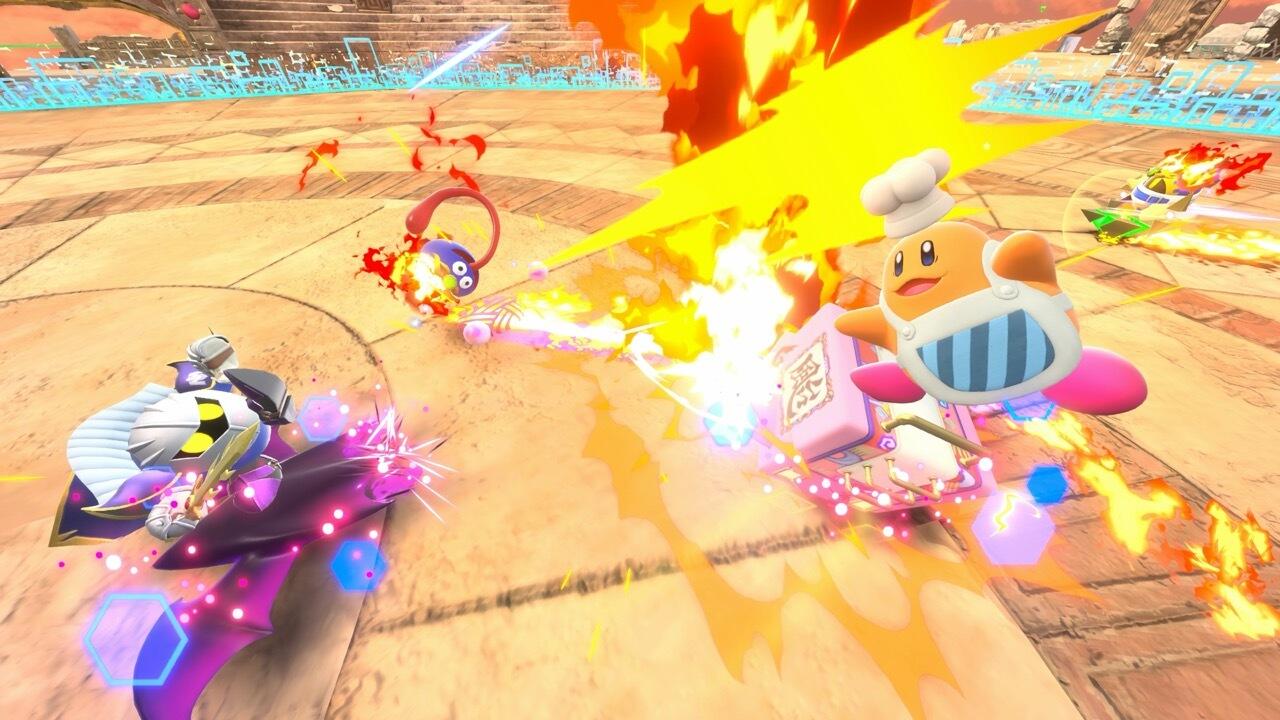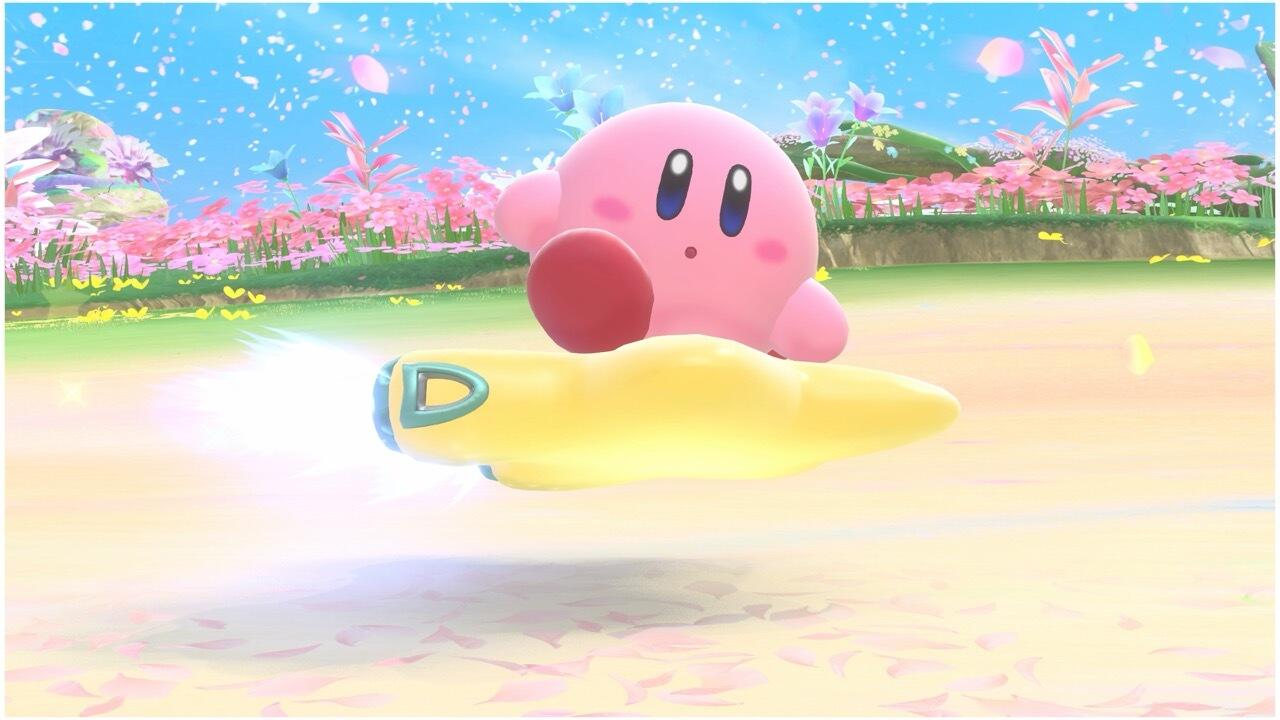Kirby Air Riders Review (Nintendo Switch 2)
Summary: Kirby’s latest airborne adventure succeeds at standing out simply by embracing its own weird, charming identity.
4.5
Pink Chaos
When Kirby Air Ride was released for the GameCube, it developed a cult following for its one-button control scheme and free-flowing movement. Now, two decades later, Kirby Air Riders has arrived on the Switch 2, carrying the weight of both nostalgia and modern expectations. It doubles down on the series’ signature glide-based racing and adds enough new ideas to make it feel fresh again. The result is a game that revives the old formula with a spark that feels fully realized — as if the ideas from 2003 have finally been given the room and technology they always needed.
Right away, the handling sets the tone. Vehicles, also known as machines, automatically build momentum. Once you’re on the track, you glide rather than needing to accelerate. The boost button (‘B’) is designed to be used strategically, as it slows you down until you stop holding it. The flip side is that the longer you hold it down, the faster the boost you’ll get. It’s a style of racing that echoes the GameCube classic, but it has been vastly improved in this release. Some machines are nimble, some slow and heavy, while others are designed to bounce off walls more than hug curves. Although the variety keeps things interesting, it does mean the screen often feels cluttered when boosts are firing, riders are colliding, and special abilities are popping off left, right, and centre. Still, when the chaos clicks, it feels exhilarating. Races where you’re sliding around rails, throwing an opponent off guard with a special, and blasting your way to first place all come together in a satisfying victory.
One of the most pleasing aspects is just how much there is to do. Beyond the standard races lies Top-Down Mode, where the camera is shifted overhead for arcade-style racing. Then there are modes like Speed Trials, Sky Relay, and the re-designed City Trial, which originally appeared in Kirby Air Ride for the GameCube alongside Top-Down Mode. In City Trial, riders have five minutes to collect stat boosts and participate in random world events for prizes before a final minigame showdown commences. It’s a very creative take on an escalation-based multiplayer battle, a formula that has generally been received well by players in recent times: start with nothing, boost your stats, and collect better gear (or machines) before the final showdown.
On top of that, the Miles Shop has a wide selection of customisation options available to purchase with miles earned through races and challenges. You can spend miles on machine parts, colour schemes, decals, character cosmetics, and more. The Miles Shop is a welcome addition that gives you an incentive to complete as many challenges as you can.
Visually, Kirby Air Riders has a softness to its art style, with Kirby looking as round and expressive as ever. The machines have a playful toy-box charm to them as well. The Switch 2 hardware grants the world richer textures, so even the simplest surfaces have a gentle shine. The tracks are easily the highlight of the visuals. They stretch across floating islands and drifting cloud paths, with something always happening in the background. At full speed, the sense of motion is strong enough that it feels as if the wind is propelling everything forward.
Moreover, the audio has a certain warmth to it that complements the visuals well. The soundtrack has cheerful melodies that stay in your head long after you stop playing. The music picks up when a race gets more hectic and eases off during calmer moments. The sound effects are well done too, with boosts that have a satisfying burst and the gliding of the machines creating a soft whoosh that sells the illusion of floating. What’s more, the menu announcer’s theatrical voice hypes you up before you even start a race, and it feels like a clear nod to Super Smash Bros.
Final Thoughts
Kirby Air Riders captures the spirit of the 2003 original but enhances it with improved graphics, richer customisation, and a wider range of modes that give the game more longevity. For long-time fans, it feels like a long-overdue homecoming. For new players, it offers a racing game that stands out from anything else on the Switch 2. And for both groups, it proves that Kirby’s quirky little racing experiment from 2003 was never a one-off: it was an idea waiting for the right moment to soar.












